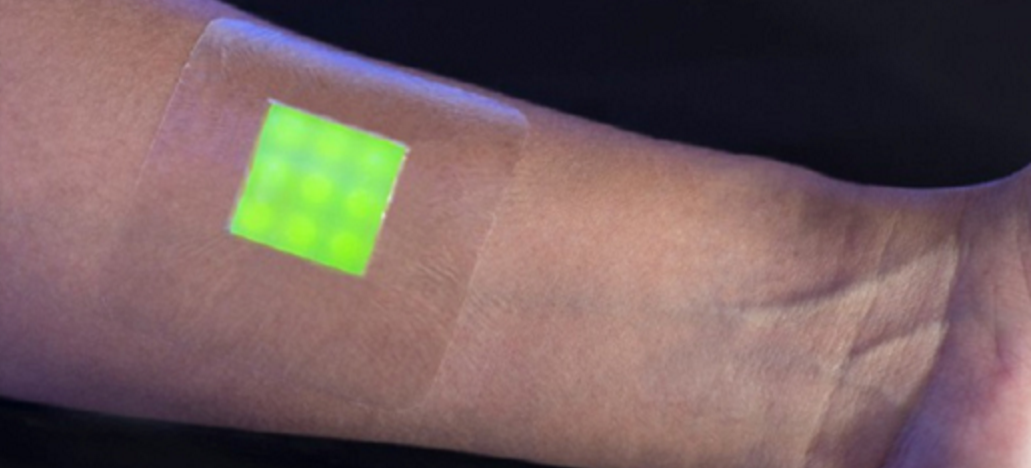Bacterial infection is a fairly common and potentially dangerous complication of wound healing, but a new “intelligent” dressing that turns fluorescent green to signal the onset of an infection could provide physicians a valuable early-detection system. It isn’t easy to diagnose wound infections before they’ve progressed into a nasty, purulent mess, and many doctors prefer to play it safe by doling out antibiotics early. But a clever new bandage that glows bright green at its first whiff of bad bacteria could help change that.
Researchers in the United Kingdom recently unveiled a prototype of the color-changing bandage, which contains a gel-like material infused with tiny capsules that release nontoxic fluorescent dye in response to contact with populations of bacteria that commonly cause wound infections.
Led by chemistry professor Toby Jenkins at the University of Bath, the new “smart bandage”—although not yet tested in humans—might one day serve as an early warning system, allowing doctors and patients to detect infections before they get out of hand. The mechanism behind it is pretty clever: the bandage contains a gel-like material infused with tiny, fluorescent green dye-filled capsules. When it comes in contact with toxins produced by pathogenic bacteria, those capsules are punctured. And voila, a lovely green glow signals your unwanted microbial colonists.
Jenkins says the transition is “almost certainly” associated with the formation of a so-called biofilm, a layer of microbes that work together and secrete a slimy substance to defend the colony against the immune system. At a high enough population density, the bacteria film switches on the production of toxins, says Jenkins. The new dressing works because the outer layer of the dye-containing capsules is designed to mimic aspects of a cell membrane. Toxins puncture the capsules like they would cells in the body, releasing the dye, which fluoresces when it is diluted by the surrounding gel.
An early application of the technology might be burn treatment. Burn victims are often prescribed antibiotics preventatively, because doctors are so worried about them developing bad infections. But as we’re acutely aware in the age of antibiotic resistance, this strategy can backfire, resulting in even more aggressive pathogens.
In a recent demonstration, Jenkins and his colleagues showed that prototype bandages turned fluorescent shortly after coming into contact with biofilms of three separate species of pathogenic bacteria, but did not change color after contacting biofilms of non-pathogenic species. The team recently received a grant from the U.K.’s Medical Research Council to test its ability to detect infection from wound swabs and blister fluid taken from pediatric burn victims. If all goes as planned, the technology could be ready for clinical testing by 2018.


